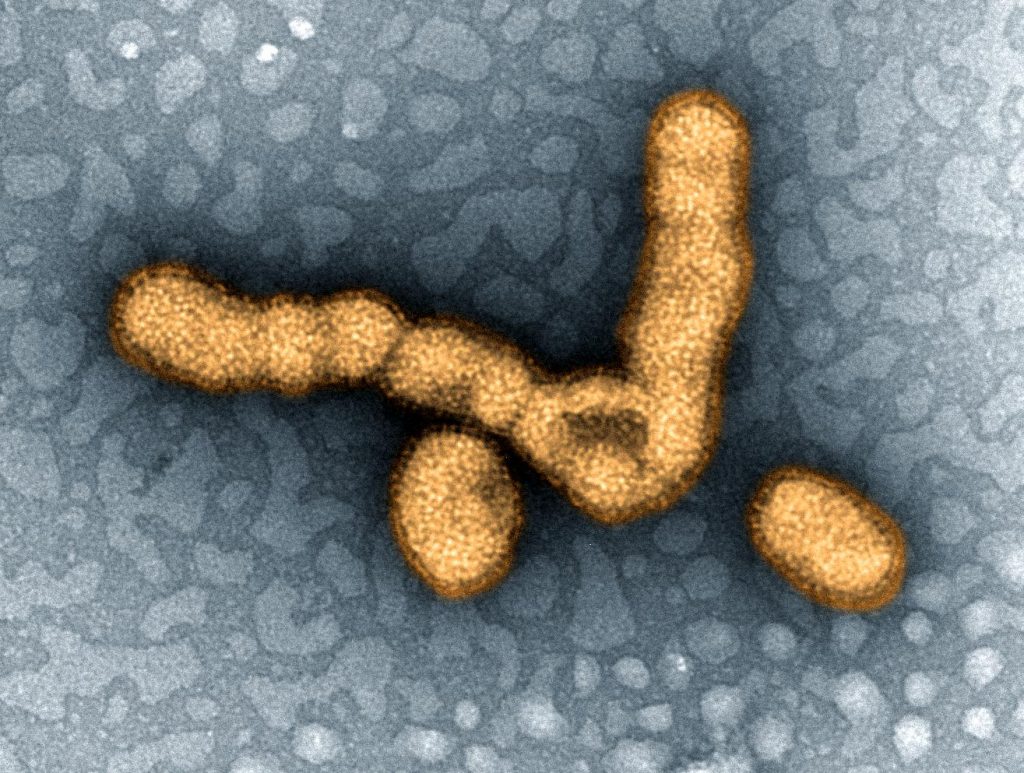Naturstoffgenomik
Screening von Bioressourcen zur Identifizierung neuer antiviraler Substanzen zur Behandlung von Influenza-Infektionen
H1N1-Influenza-Virus © CDC-wikimedia commons
Institution: Fraunhofer-Institut für Molekularbiologie und Angewandte Oekologie IME
über das projekt
Influenzaviren der Gattungen A und B verursachen bei Gesunden in der Regel unkomplizierte fieberhafte Infekte der oberen Atemwege mit respiratorischen Beschwerden. Im Fall von schwerwiegenden Verläufen kann es jedoch zu Komplikationen kommen, wie der Ausbildung einer primären Influenzapneumonie oder bakteriellen Sekundärinfektion, die zum Tod des Patienten oder der Patientin führen können. Durchschnittlich sterben in Deutschland jedes Jahr etwa 1.000 Menschen an einer Influenzainfektion.
In Deutschland sind mit M2-Ionenkanalblockern und Neuraminidase-Inhibitoren zwei Wirkstoffklassen zur Therapie der Grippe zugelassen. Die große genetische Flexibilität der Viren bedingt jedoch die Gefahr einer schnellen Resistenzentwicklung. So haben einige Subtypen bereits eine vollständige Resistenz gegen M2-Ionenkanalblocker entwickelt. Auch gegen Neuraminidase-Inhibitoren wurden bereits zahlreiche Resistenzen beschrieben. Daher sind neuartige Wirkstoffe zur Behandlung von Influenzainfektionen dringend erforderlich. Das primäre Ziel des Projektes ist die Identifizierung neuer Wirkstoffkandidaten zur Subtyp-übergreifenden Behandlung der Grippe.

Partikel des H1N1-Influenzavirus © Credit: NIAID
Die Forschungsgruppe
- Dr. Kornelia Hardes
- Dr. Centurión Carrera, Alejandra
(associated PostDoc)
PUBLIKATIONEN
Bestle D, Heindl MR, Limburg H, Van Lam van T, Pilgram O, Moulton H, Stein DA, Hardes K, Eickmann M, Dolnik O, Rohde C, Klenk HD, Garten W, Steinmetzer T, Böttcher-Friebertshäuser E(2020) TMPRSS2 and furin are both essential for proteolytic activation of SARS-CoV-2 in human airway cells. Life Science Alliance, 3 (9) e202000786
Bühne frei für den wissenschaftlichen Nachwuchs! Sie sind Projektleiterinnen bei LOEWE-TBG und leiten ihre eigenen Nachwuchsgruppen: Dr. Kornelia Hardes (Fraunhofer IME) forscht zu Infektionskrankheiten und Dr. Antje Steinbrink (JLU Gießen) untersucht einheimische und invasive Stechmücken. Im Video stellen sie sich vor und geben Einblicke in ihre Labors.